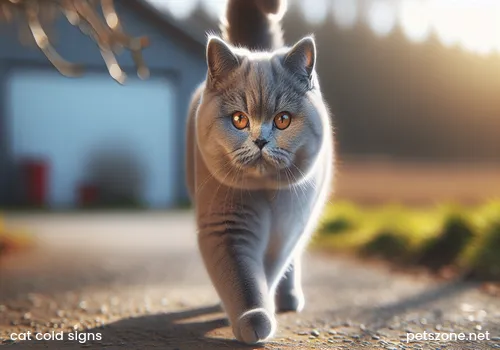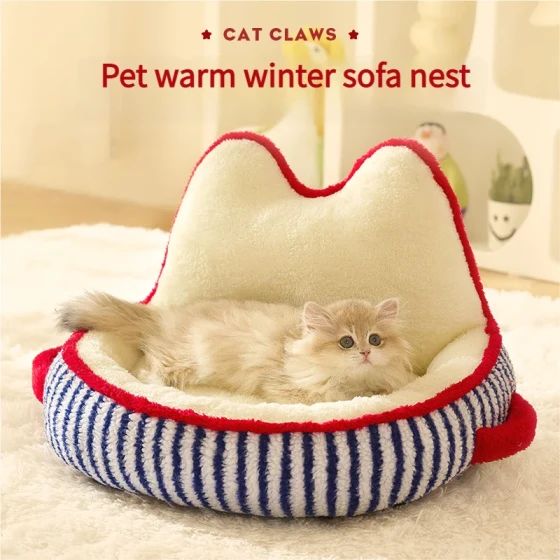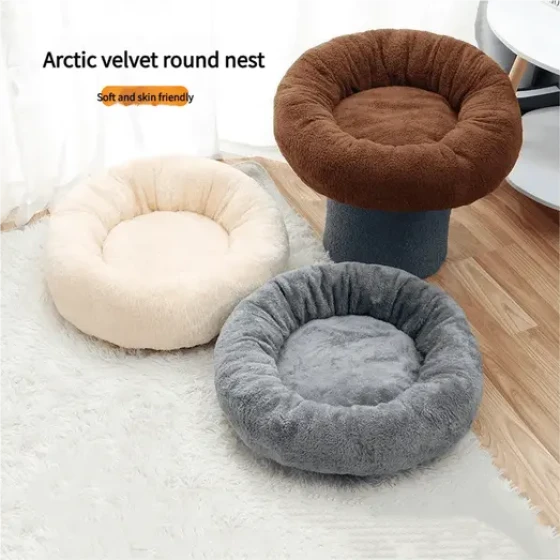How to Tell if a Cat is Cold
You only want to provide the best for your cat. That’s why you might find yourself wondering during the cold winter, "How do I know if my cat is really cold?" Signs your cat might be too cold include shivering, puffing up their fur, cold tail and nose, and searching for warm places to cuddle. Here are ways to help your furry friend stay warm and comfortable during the cold winter.
How to Tell if a Cat is Cold

A cold cat may burrow into blankets. Signs that your cat is very cold and may have caught a cold include:
- Shivering
If your cat is really cold, it may start to shiver, just like a human. Shivering can also be a sign of anxiety, pain, or illness, so it’s important to observe other behaviors of your cat. For example, heavy breathing while shivering may indicate stress or pain. If you have any doubts, consult your veterinarian.
- Hunching over with puffed-up fur
A cold cat may crouch closer to the ground and slightly fluff up its fur. If a cat stands tall and pats its fur, it usually feels threatened. But if she’s curled up and slightly puffed up, she may be feeling cold.
- Cold extremities
The limbs of a cold cat may feel colder than normal to the touch, such as the ears, tail, or tip of the nose. Cats at risk of hypothermia may become lethargic, have dilated pupils, or shallow breathing. Such symptoms may require immediate veterinary attention.
- Seeking warm places
A cold cat may seek warm places more often than usual. This can include burrowing into blankets, cuddling your legs, or trying to sleep in warm spots such as heated vents. Of course, this varies by cat. Some cats want to cuddle regardless of being hot or cold, so pay attention to changes in behavior.
How Cold is Too Cold Indoors for Cats?
Some people like to keep their homes very cold in winter so they can wrap themselves in blankets, but is this okay for your cat? Finding the ideal indoor temperature for cats in winter really depends on the breed. Cats’ normal body temperature ranges from 99.5°F to 102.5°F (about 37°C), but how much warmth they need varies by weight and fur type.
Long-haired cats can tolerate cooler homes, while short-haired or slender cats may need warmer environments. Meanwhile, hairless cats like the Sphynx feel very cold even if you just feel a bit chilly inside. Therefore, it’s best to watch for the signs listed above, either keep the house warmer or provide cozy nesting areas for your cat to warm up.
How to Help Your Cat Stay Warm
Your cat will stay warm if you provide plenty of warm spots for it to snuggle inside.
This can include heated beds placed in your cat’s favorite spots. Heating pads designed for people should not be given to cats as they could cause your cat to overheat. Consider using self-warming beds made specifically for cats instead.
You might also want your cat to snuggle under a blanket with you at night. As an added bonus, this will help you stay warm too.
Consider setting up a wind-free perch or bed near a sunny window. Even if it is cold outside, sunlight can be a great source of warmth.
If your cat is hungrier in winter, you might want to feed your cat a bit more. But don’t overdo it, as obesity can cause a range of health problems for cats. Discuss a healthy amount with your veterinarian.
For hairless cats, extra measures might be necessary. While most cats dislike clothing, Sphynx cats may need a little hoodie or sweater during cold winters. Look for soft fabrics and avoid anything that might irritate their skin.
As you can see, the ideal temperature for your cat in winter really depends on its preferences and how cold your home is. Watch for any signs that your cat is too cold and set up beds and soft resting places so your cat has plenty of options to stay warm.


-560x560.webp)
